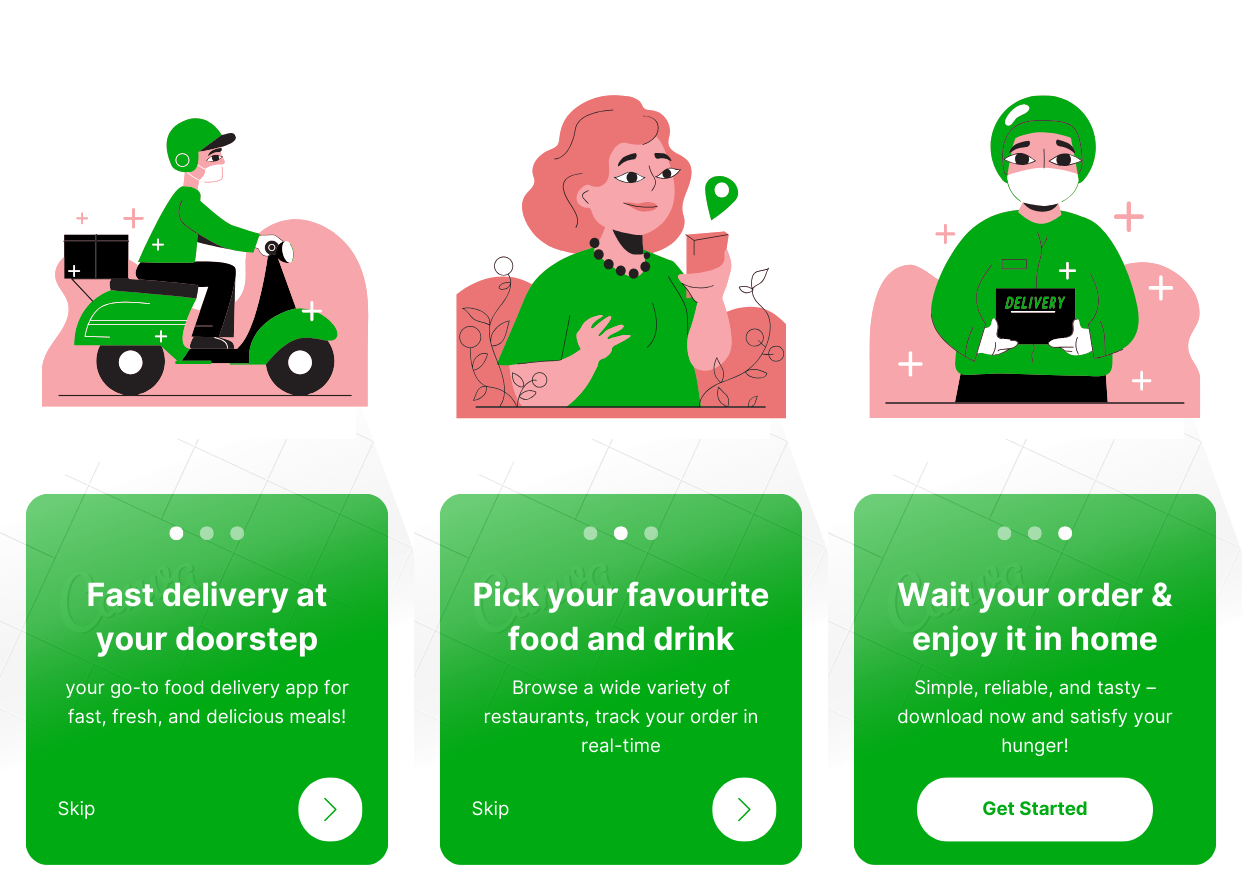How to Build a Successful Food Delivery App: Cost, Key Features, and Development Guide
In today's fast-paced digital world, the food delivery industry is booming. With the market expected to hit a staggering $126.92 billion in 2024, there’s no better time to build an app like Uber Eats or Deliveroo. However, creating a successful food delivery app involves more than just coding—it requires strategic planning, key features, and a thorough understanding of the development process. In this blog, we will walk you through everything you need to know about building a food delivery app, including its cost, essential features, and step-by-step development process.
Understanding the Market
Before diving into the development, it's crucial to understand why food delivery apps are so popular. Consumers prefer the convenience of ordering food with a few taps on their smartphones. By developing an app, you can connect restaurants, delivery drivers, and customers in a seamless way.
Core Features of a Food Delivery App
To create a food delivery app like Uber Eats or Deliveroo, you need three main interfaces: The Customer App, the Restaurant App, and the Delivery Driver App. Each must have its own unique features to work together smoothly.
a). Customer App Features
- User Registration and Login: Secure sign-up options with email, phone number, and social media integration.
- Browse Menu and Restaurants: Allow customers to search for restaurants by cuisine, ratings, location, and more.
- Order Placement and Scheduling: A simple and efficient ordering process with options for immediate delivery or scheduling orders.
- Real-time Order Tracking: A must-have feature that allows customers to track their order status and delivery in real-time.
- Multiple Payment Gateways:Offer various payment options, including credit/debit cards, mobile wallets, and cash on delivery.
- Rating and Review System:Enable users to leave feedback about the food and delivery experience.
b). Restaurant App Features
- Order Management: Restaurants should have the ability to accept, decline, or schedule orders.
- Menu Management: Restaurants need an easy-to-use interface for updating menus, adding special deals, and adjusting prices.
- Payments and Receipts: A secure system for processing payments and receiving receipts for completed orders.
- Order History: A section to view previous orders and track daily/weekly sales.
c). Delivery Driver App Features
- Driver Registration and Login: Secure onboarding for drivers with proper verification.
- Order Delivery Request:Real-time alerts when a new delivery request is available.
- GPS Navigation: Integrated map services to help drivers navigate from the restaurant to the customer’s location.
- Earnings and Payouts: A dashboard for tracking completed deliveries and earnings.
Development Process: Step-by-Step
Building an app like Uber Eats involves several stages, each critical to delivering a polished and efficient product.
- Market Research and Target Audience: Start by analyzing your target market. Understand the specific needs of your audience—whether they are busy professionals, students, or families. Research competitors and identify gaps in their offerings to create a competitive advantage.
- Choosing the Right Business Model: There are three main types of food delivery business models:
- Order-Only Model: The app only facilitates ordering, while the restaurant handles delivery (like Grubhub).
- Order and Delivery Model: The app handles both orders and deliveries (like Uber Eats).
- Cloud Kitchen Model: Restaurants operate without a physical dining space, delivering exclusively through the app.
Choose the model that fits your business goals.
- App Design and Prototyping: Once the business model is clear, move on to UI/UX design. Focus on creating a user-friendly interface with a smooth user experience. Tools like wireframes and prototypes help visualize the app layout and functionality before development begins.
- Technology Stack: The tech stack includes all the technologies used to build the app. For a food delivery app, you'll need:
- Frontend Development: React Native or Flutter for mobile apps.
- Backend Development: Node.js, Python, or Ruby on Rails.
- Database: MySQL or PostgreSQL for managing data.
- Cloud Storage: AWS, Google Cloud, or Microsoft Azure for hosting.
- Payment Gateway: Integration with Stripe, PayPal, or local options.
- Development and Testing: Start coding the front end, back end, and database in parallel. Develop APIs to ensure communication between the different components of the app. Once the development phase is complete, rigorous testing is essential. Conduct various tests, including functional testing, performance testing, and security testing, to ensure a bug-free, smooth experience.
- Launch and Post-launch Support:After thorough testing, launch the app on both iOS and Android platforms. However, development doesn’t stop here. Continuous support, regular updates, and feature enhancements are crucial for long-term success.
Building a successful food delivery app is a strategic process that involves careful planning, choosing the right features, and understanding the market trends. While the initial investment may seem high, the potential return is immense as the food delivery market continues to grow.
By partnering with experienced app developers like HTO Software Systems, you can turn your food delivery app vision into a reality. Our team of skilled professionals will guide you through the entire process, ensuring a seamless and successful app launch.
Ready to build the next big food delivery app? Let's innovate together and create something amazing!

